Can you believe that something as basic as a toilet can be a topic of discussion? Even I myself thought it was not important, but not anymore. Toilets are very crucial to our everyday life and the type of toilet you choose is very important. Thankfully, there are dozens of toilet types, styles, and flush mechanisms available in the market today. From gravity-fed toilets to dual-flush toilets. It is important to explore all of them with their pros and cons in order to get the best.
To make things easier for you, we’ll take a look at some of the best toilet types with their pros and cons. Continue reading so you can learn more and make an informed decision for a better toilet experience.
Types of toilet
1. Gravity-fed or gravity-flush toilet
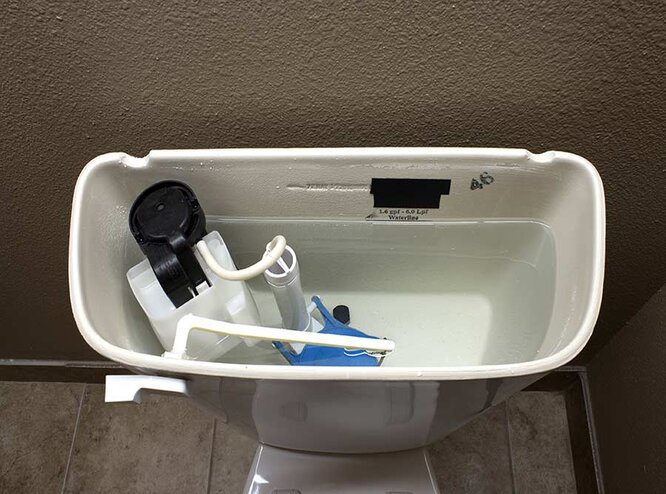
This is the most common type of toilet used in the United States of America. Gravity-fed toilet holds water that drops into the bowl once the flush button is pushed. It then relies on gravity to flush the waste water down the drain. This type of toilet is best for regions that use septic systems.
Pros
- Silent when flushed
- Easy cleaning and maintenance
- Parts for repair are easy to find because they are very common
- Easy repair
Cons
- May require multiple flushes to dispose of the waste
- Clogs easier
- The flush handle or the chain inside may cause a problem over time
2. Pressure-assisted toilets
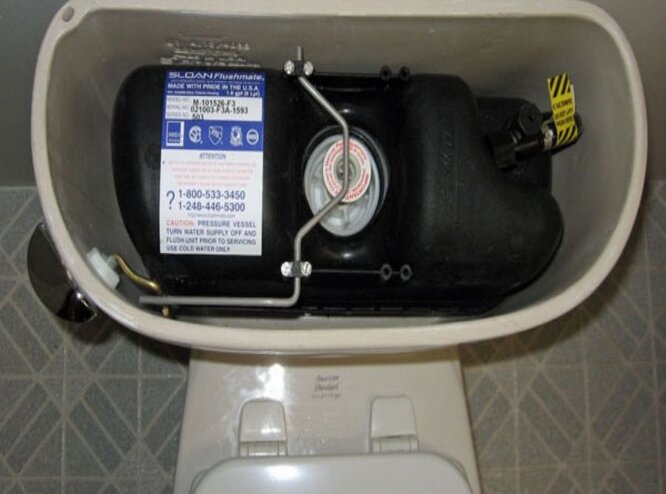
Pressure-assisted toilets are very similar to gravity-fed toilets, but instead of relying on gravity, pressure-assisted toilet relies on a pressurized water system. This is done via a pressure tank that pushes air into the water tank, creating a stronger flush.
Pros
- Can handle heavy waste that can clog the toilet, making it clog-resistant
- Conducive for both spacious and tight toilet space
- Conducive for areas with a weak or compromised septic system
Cons
- Noisy when flushed
- Expensive
- Difficult to find parts in case repairs are needed
- Difficult repair
3. Dual flush toilets
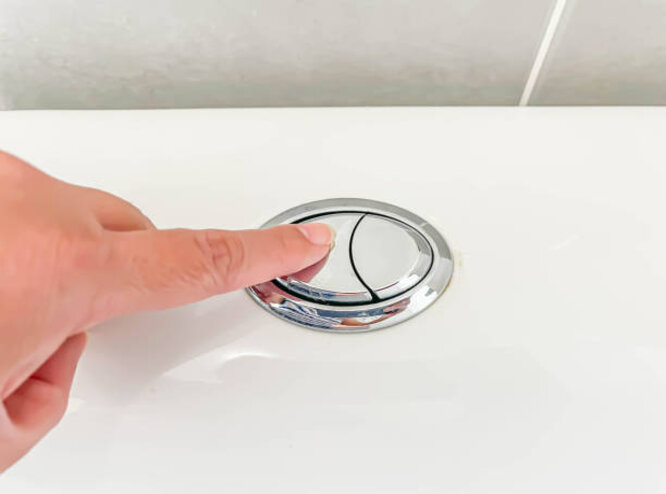
Dual flush toilets feature two flush systems, one for a half flush (used for liquid waste) and the other for a full flush (used for solid or heavy waste). Because of the dual flush toilet’s water efficiency, many countries are adopting it for both commercial and residential buildings.
Pros
- Water efficiency, saving money spent on water bills over time
- They are good for the environment
- They are budget-friendly
- Ideal for areas facing water shortage
Cons
- Regular cleaning and maintenance needed
- Some dual-flush toilets are confusing. You may end up using the wrong button and have to flush twice, this defeats the whole purpose of the dual-flush system
4. Double cyclone flush toilets
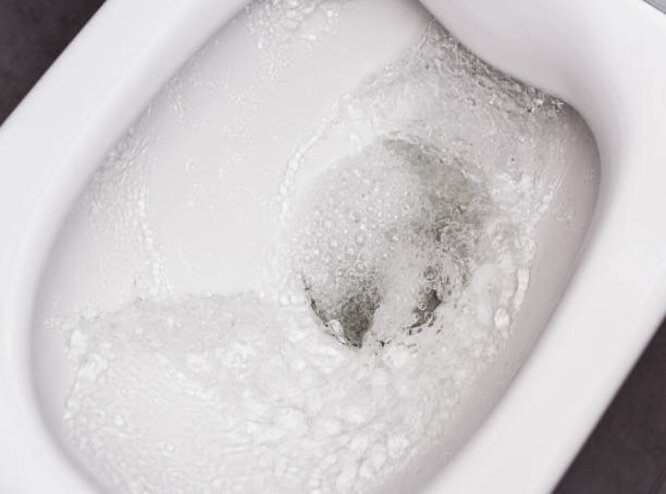
Double cyclone flush toilets are newer designs that have swept the market. They feature two jets that flush wastewater and create a cyclone effect. Their powerful flush makes them more water efficient, saving on your water bill. Double cyclone flush toilets are great for those who have a septic system.
Pros
- Fast and powerful flush
- Water efficient, helping you save some bucks on water bills
- Eco-friendly
- Most double cyclone flush toilet features a dual flush system as well
Cons
- Very expensive to purchase and install
- Requires stronger plumbing system
- Repairs are very difficult and pricey
Different styles of toilets
Now that we’ve settled on the types of toilets, let’s have a look at the various toilet styles on the market today.
1. One-piece or single-piece toilets
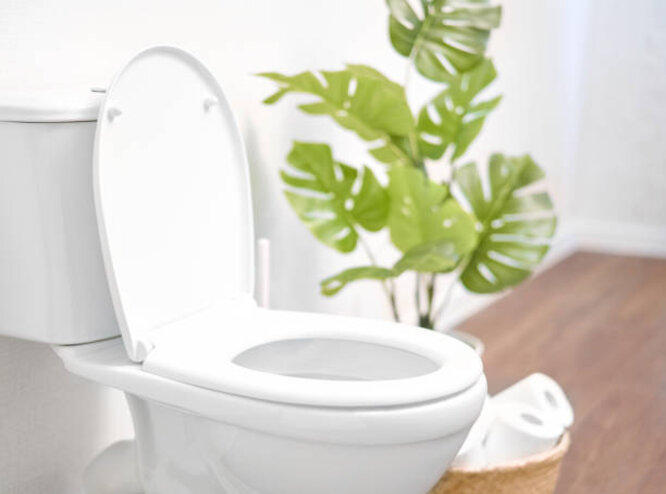
One-piece or single-piece toilet consists of just a bowl and a tank installed as one structure. It is one of the most commonly used toilet styles because it is easy to clean and maintain. It is usually smaller in design, making it suitable for small or compact spaces.
Pros
- Easy to clean and maintain
- Installation is relatively easy, DIY-friendly even
- Repair is easy
- Sleek and modern design
- Less prone to leaks
Cons
- It uses a lot of water
- Purchasing this type of toilet can cost a fortune
- They have small traps that can clog easily
- Heavy
- Breakage during shipping is an issue of worry
2. Two-piece or double-piece toilets
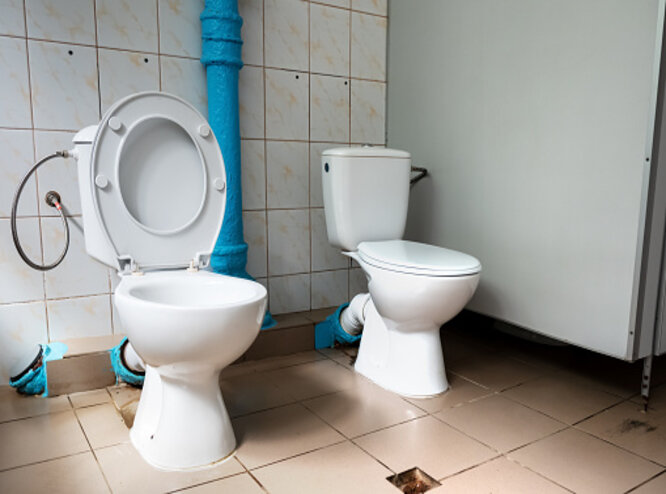
Two-piece or double-piece toilets are more common than other toilet styles in the United States. They consist of a separate bowl and water tank connected at the base. It is often less expensive than the single-piece toilet and incredibly durable.
Pros
- Very durable
- Very affordable
- Easy to install and repair if damaged
Cons
- Prone to damage and leakage if not maintained properly
- Cleaning and maintaining is a real issue with double-piece toilets
- Requires more space than single-piece toilets
3. Wall-mounted toilets
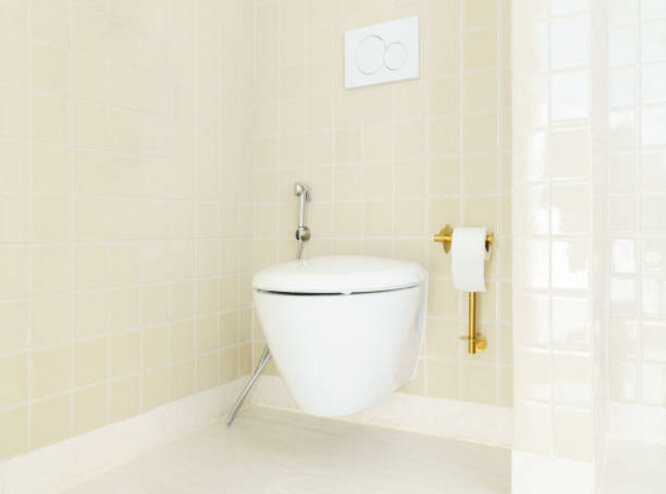
Wall-mounted toilets, also referred to as wall-hung toilets are toilets mounted on the wall using strong mounting hardware and the water tank built-in on or behind the wall. It is a great choice for homeowners who wish to have a modern and sleek look to their toilet space.
Pros
- Aesthetically appealing
- Space-saving toilet solution
- Cleaning and maintenance are relatively easy
- Installation flexibility (custom height of installation)
Cons
- Has to be installed by a professional so it can achieve full support capacity
- They are more expensive
- Costly and difficult repairs
- Installation is tricky, even for professionals
Types of flushing systems or mechanisms
There is one more toilet component that you should consider, and that is the flush mechanism. Choosing the right one is important as it will impact your water bill. Here are some of the best types of toilet flush mechanisms.
1. Single flush mechanism
The single flush mechanism is the traditional one you will find in most homes. It features just one type of flush for both liquid and solid wastes. It is often less expensive than other mechanisms but uses more water, which may, over time, cost more to operate.
Pros
- Very affordable
- Operation is very simple and straightforward
- Easy to maintain
Cons
- A single flush button or handle has the tendency to break easily
- Not water efficient
- Not environmentally friendly
2. Double flush mechanism
Although it has already been mentioned under the types section, we still have to reiterate it in this section. This flush mechanism features two flush; the half flush for liquid waste and the full flush for solid waste. They tend to be a bit more expensive than the single flush mechanism but in the long run will make up for its price.
Pros
- Eco-friendly
- Budget-friendly
- This type of flush mechanism is effective in saving water
Cons
- Expensive
- Difficult installation
3. Touchless flush mechanism
The touchless flush mechanism is a popular choice for commercial buildings around the world. They are designed with motion-sensor activators. You no longer need to have any contact with the toilet handle in order to flush, making them convenient, modern, and hygienic.
Pros
- Great for reducing contact with the toilet, reducing the spread of germs
- Easy to use
- Modern look
Cons
- Very expensive
- Repairs are difficult
FAQs
Which type of toilet is most common?
The Gravity-fed toilet is the most common type of toilet.
Which toilet style is best?
The two-piece or double-piece toilet is considered one of the best because it requires less water and is affordable.
Which type of toilet flush is better?
The pressure-assisted toilet generally offers a better flush than other types but tends to be noisy when flushed.
Which toilet type uses less water?
The dual toilet flush and the double cyclone flush toilets use less water.
Wrapping thing up
Now that you know the various types, styles, and flush mechanisms for toilets, I believe making a decision will be easier. But remember to take into account the following factors; the bathroom size, your budget, plumbing system, and operation. By taking these factors into consideration, you can narrow the list down and find the perfect toilet for your bathroom space.
If you are still confused or torn between a few, we recommend consulting a plumber or bathroom designer. He/she should help narrow the options down and get you the perfect one for your home.
I hope you found this article helpful, If you did, you should also see this article on the popular types, styles, & categories of kitchen cabinets.
Thanks for reading.